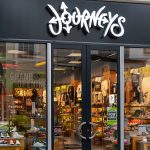Johnson Outdoors reported revenues surged 58 percent in the fiscal fourth quarter ended October 2 as pent-up demand drove significant sales gains across its fishing, camping and watercraft segments. The performance propelled the company to positive growth for the full fiscal year.
“The 2020 fiscal year was like no other year in our history,” said Helen Johnson-Leipold, Johnson Outdoors’ chairman and CEO, on a conference call with analysts. “We started the year with a very strong first quarter, but the onset of the pandemic and the initial stay-at-home mandates cut short our momentum and significantly impacted our second and third quarters, which is the heart of our primary selling season. As those mandates eased, we saw demand ramp up and participation grow in fishing, camping and watercraft recreation.”
She added, “Strong positive momentum continued in our fiscal fourth quarter, a period when the warm weather outdoor recreation industry is historically gearing down for the year. “
In the quarter, sales were $164.7 million against $104.0 million a year ago. The 58 percent gain marked a rebound from declines of 21.5 in the third quarter and 8 percent in the second quarter tied to disruptions caused by the pandemic.
Operating profit was $19.5 million in the current year fourth quarter versus $1.9 million in the prior-year fourth quarter due largely to increased sales. Net earnings increased nearly four-fold to $15.5 million, or $1.53 a share, against $3.9 million, or 39 cents, a year ago.
Gross margins were essentially flat in the quarter at 44.7 percent against 44.8 percent a year ago. Operating expenses increased 21.2 percent but were reduced as a percent of sales to 32.9 percent from 42.9 percent a year ago.
For the year, total company revenue grew 5.7 percent to $594.2 million. Net income improved 7.4 percent to $55.2 million, or $5.47.
“Overall, this year’s performance was fueled by demand created through people’s eagerness to get outdoors,” said Johnson-Leipold. “The hard work and dedication of our employees enabled us to meet as much of that demand as possible while operating under strict health and safety procedures and protocols to reduce the spread of COVID-19. Many people who got outdoors during the warm weather months of the pandemic continued their participation post-Labor Day, and we were able to take advantage of the extended season, leveraging our market-leading brands and innovation.”
Fishing Segment Sales Climb 70 Percent
By segment, sales in Fishing grew 70.3 percent in the quarter to $113.9. The segment includes Mann Kota fishing motors, batteries and anchors; Cannon downriggers; and Hummingbird marine electronics and charts. Sales in the year grew 9.2 percent to $449.9 million. The segment is led by its Minn Kota and Hummingbird brands.
“Participation in fishing has always been high, but it has been even higher this year as it has been an activity that is accessible and lends itself to social distancing, and both seasoned anglers and new anglers looked to Johnson Outdoors for great fishing experiences,” said Johnson-Leipold.
Johnson-Leipold said Minn Kota continues to see a “very favorable” response to its MEGA 360 Imaging transducer that enables anglers to gain a 360-degree view in every direction below their boat, even if the boat is anchored. Said xx, “When MEGA 360 Imaging is used together with Minn Kota Spot-Lock technology, this provides anglers with an effortless command of their boat and an uncompromising view of fish in the world below.”
Minn Kota’s Raptor Shallow Water Anchor debuted this year with two new technologies, the Auto Bottom Mode that detects bottom density and Active Anchoring which continuously monitors anchoring force and makes adjustments. Said Johnson-Leipold, “It’s still early but consumer response to the Minn Kota Raptor has also been favorable.”
Camping Sales Expand 51 Percent
Camping segment sales climbed 51.1 percent in the fourth quarter to $15.6 million from $10.3 million. Sales in the year rose 3.0 percent to $41.6 million. The segment includes Jetboil outdoor cooking systems and, Eureka! camping and hiking equipment.
“Camping is an important gateway into the outdoor recreation and one of the most accessible outdoor activities that people have been able to do safely,” said Johnson-Leipold. “Once state and national parks began to open, both our Jetboil and the Eureka brands benefited from the surge of interest and participation in the activity. Camp cooking is an integral part of the experience, and Jetboil, the technology leader in portable outdoor cooking systems, continues to be the top choice among tech-savvy outdoor enthusiasts. Consumer-driven innovation is key to providing the best camping experience possible, and we’ll keep investing in that.”

Watercraft Revenues More Than Double
In the Watercraft Recreation segment, revenues jumped 149 percent to $15.7 million from $6.3 million. Full-year sales expanded 25.0 percent to $41.9 million. The segment includes Old Town canoes and kayaks, Ocean Kayak and Carlisle paddles.
“The fishing kayak segment is the fastest-growing segment, and our Old Town Sportsman line in power, pedal and pedal fishing kayaks has generated a lot of enthusiasm since its launch earlier this year,” said Johnson-Leipold.
She said the flagship model, the Sportsman Autopilot 120, utilizes a GPS-enabled Minn Kota trolling motor to propel, steer and anchor the kayak, providing kayak anglers with hands-free fishing.
Said Johnson-Leipold, “The Sportsman Line had a great start in its first year on the market and we hope to continue that momentum going into year two. As more people desire to get out in the water, we saw strong demand across our entire Watercraft Recreation portfolio.”
She also said the Watercraft Recreation has benefited this year from its expanded digital and e-commerce capabilities.
Diving Sales Decline 5 Percent
The Diving segment, led by the ScubaPro brand, was the only segment showing declines was the only segment due to travel restrictions amid the pandemic. Sales were down 4.8 percent in the quarter to $19.5 million and off 20.2 percent in the year to $60.9 million.
Said Johnson-Leipold, “ScubaPro is the most trusted dive brand in the world, and while the diving market has experienced pandemic-related headwinds due to travel restrictions, our team has been working hard to continue to focus on sustained innovation, enhancing our digital presence globally and promoting local diving. These efforts will ensure ScubaPro is in a strong position for the future.”
Johnson Outdoors reported cash and short-term investments of $212.4 million as of October 2, a $40.1 million increase above the prior year, with no debt on its balance sheet. Inventories ended the year at $97.4 million against $94.3 million a year ago.
Dave Johnson, CFO, said the company has been adding more shifts and managing its supply chain to increase capacity where possible to keep with strong demand for its Fishing, Camping and Watercraft Recreation businesses. He added, “While demand remains high and this gives us a good start to the season, we’ll continue to monitor marketplace dynamics and related supply chain pressures caused by increased demand and COVID-related capacity constraints.”
In the Q&A session, Johnson-Leipold indicated momentum was healthy throughout the quarter. She said the company’s current customer base and new customers are both driving the growth. She added, “I think there will be increased participation because of COVID. But what level that is or and when the world gets back to kind of normal and normal activities become available, that’s the big question.”
Asked about the potential use of cash, Johnson-Leipold said the company continues to explore potential acquisitions but she noted that the strong demand across the outdoors has elevated the pricing on deals and private equity companies are also looking to invest their cash positions.
“There is a lot of cash and not a lot of opportunities to buy,” said Johnson-Leipold.
“So, I would say it’s a very difficult market, but we are always looking, and we’re very strategic. And I think one of the reasons we continue to be, have resiliency, is because we are very strategic about the decisions we make especially with the acquisitions, and we will not do an acquisition to bump our sales or because we have the cash to do so. We have to make sure that there is an acquisition out there, and that it’s going to be beneficial to us and to accelerate our ability to build value over time. So, we are looking, and we are being strategic about it.”
Photos courtesy Humminbird, Eureka!
















